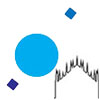Launched on 2004 November, the Neil Gehrels Swift Observatory (Swift) is a NASA mission with a strong participiation from Italy and the United Kingdom. Swift had been conceived to study the Gamma-Ray Bursts (GRBs), capitalising on the technology which allowed a rapid spacecraft re-pointing to study GRB afterglows. Thanks to its unprecedented re-pointing capabilities, however, Swift has gone beyond its original science goals, contributing to basically all fields of astronomy.
Apart from GRBs that Swift has studied in great details, clarifying several aspects on the progenitors nature, be they particular types of supernovae, as in the case of long GRBs, or binary systems which merge into either a black hole or a magnetar, as in the case of short GRBs, Swift has contributed to the understanding of the behavior of active galactic nuclei, has followed-up on the evolution of all supernova explosions occurred in these years, has mapped the gamma-ray error boxes of the unidentified Fermi sources to search for their elusive counterparts, has studied the high-energy emission of binary systems, and variable stars, no to mention the study of comets. Moreover, thanks to the fast response of the instrument and of the science team behind it (as well as of a bit of luck) Swift has discovered rare and spectacular events, such as the tidal disruption of a star by a black hole or the prompt X-ray emission triggered by the sudden death of a star as it explodes as a supernova. More recently, Swift has been employed in the search of electromagnetic counterparts of gravitational wave events.
In this way, Swift has marked a revolution in the study of transient phenomena in the near and far Universe, in what astronomers call Time Domain Astronomy.
Apart from participating to the study of transient sources and GRBs, at IASF-Mi we exploit the unique flexibility of the Swift re-pointing system to search for the X-ray counterparts of gamma-ray sources detected by the Fermi/LAT.
